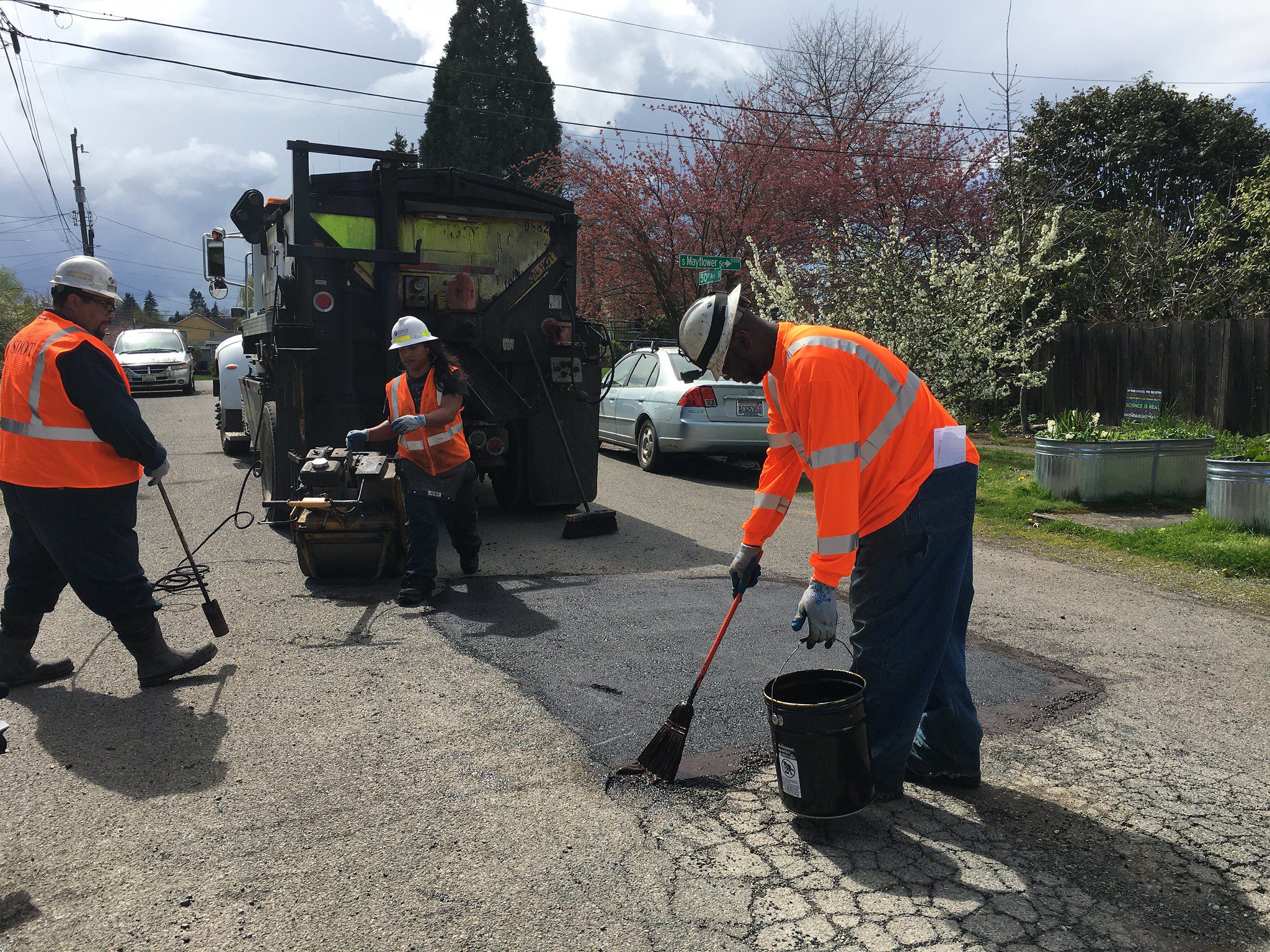 SDOT crew members work to fill potholes in southeast Seattle. Photo: SDOT.
SDOT crew members work to fill potholes in southeast Seattle. Photo: SDOT. Blog stats: 800 words | 4-minute read
At-a-glance:
- We filled 25,000 potholes in 2023, which is the most we’ve filled in the past five years.
- We typically fill over 80% of potholes within 72 hours after receiving a request from the public.
- We patrol major streets to proactively look for potholes following the winter storm season.
- We expect new potholes may appear in the coming weeks due to recent freezing weather. We appreciate your patience as it may take longer than usual to deal with a large surge of potholes at once.
SDOT crews work year-round to fix potholes and filled 25,000 last year. Every winter, storms and freezing temperatures damage our streets and cause previously filled potholes to reappear. We expect to see more new potholes in the coming weeks following recent freezing conditions, and our crews are already working to respond as quickly as possible.
How to report a pothole:
New potholes appear frequently, and we can’t fix a pothole we don’t know about. Thanks for your help!
- Use the Find It, Fix It App
- Submit an online report
- Email 684-ROAD@seattle.gov
- Call (206) 684-ROAD [7623]
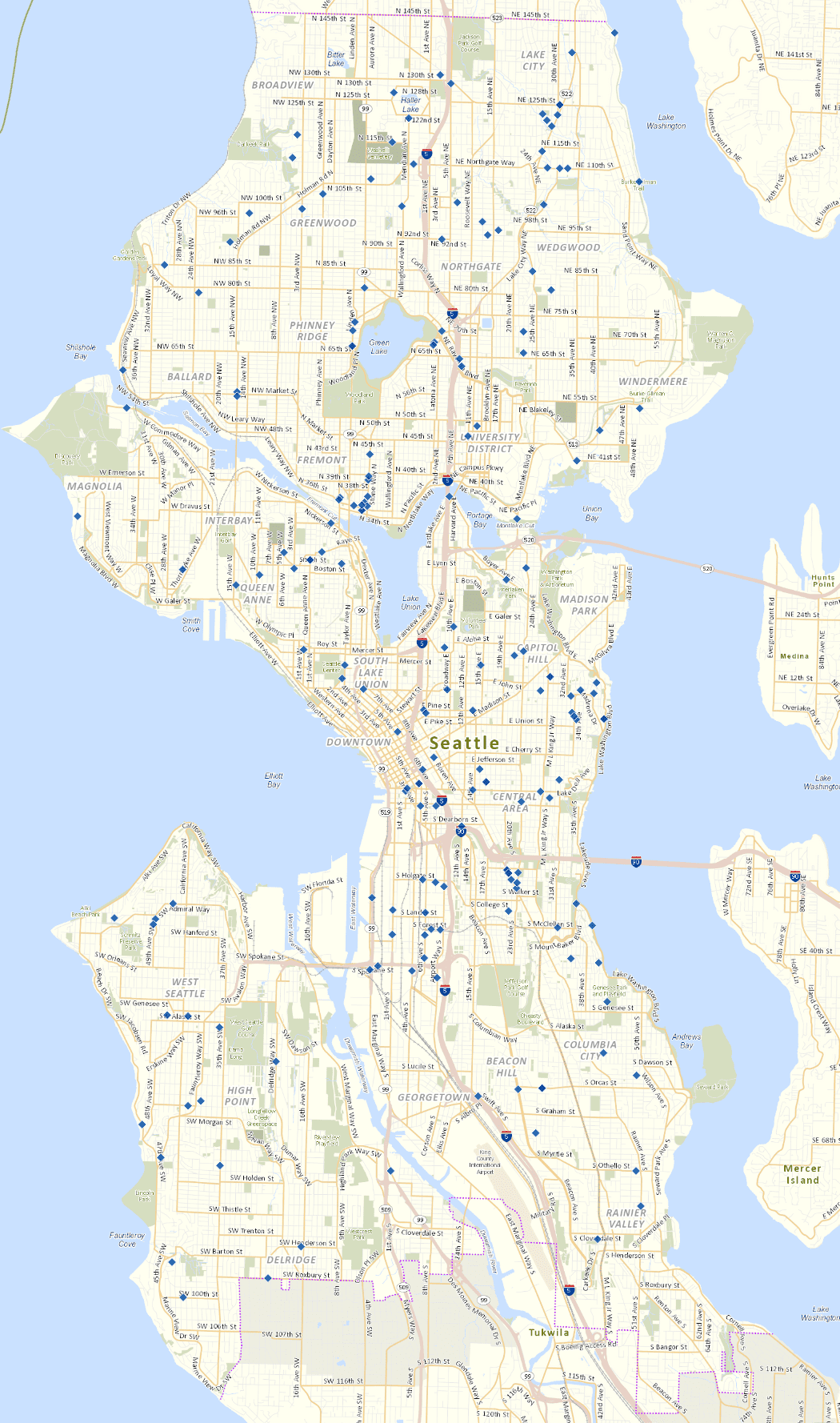
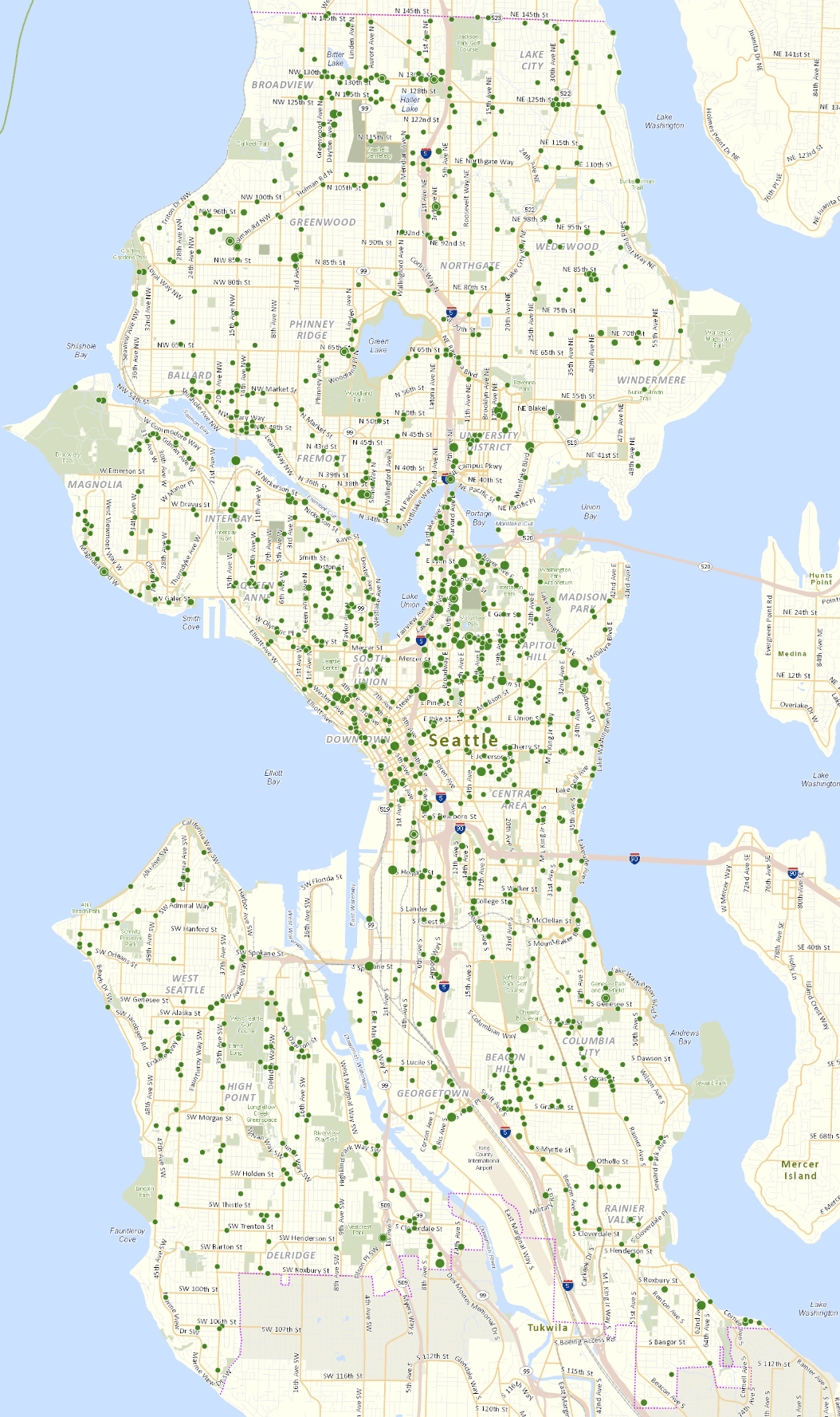
Our interactive Pothole Repair Status Map shows where crews have been assigned to fill newly reported potholes (left) and where we’ve filled potholes in the past 90 days (right).
Our crews respond to most pothole requests within 3 days, and also proactively look for potholes on major streets.
We typically fill 80% or more of potholes within 3 business days of when we receive a request from the public. While this is always the goal, we can’t be everywhere at once and it may take us longer than usual to repair all the street damage we could see this winter due to prolonged freezing temperatures.
We also search for potholes before they are reported to us. When we respond to a request to fill a pothole, our crews also repair any other nearby potholes they discover.
This year, our crews plan to patrol major streets to search for new potholes. We will prioritize looking along our snow plow routes, which are the most essential streets in our transportation system, and experience an increase in heavy vehicles during winter storms making them the most likely place for new potholes to appear.
It may take us longer than usual to respond to potholes during severe weather because the crew members who fill potholes are the same people who work day and night during storms to drive snow plows, shovel snow, clear landslides, and respond to flooding. When we’re faced with multiple challenges, we prioritize our work to promote public safety.
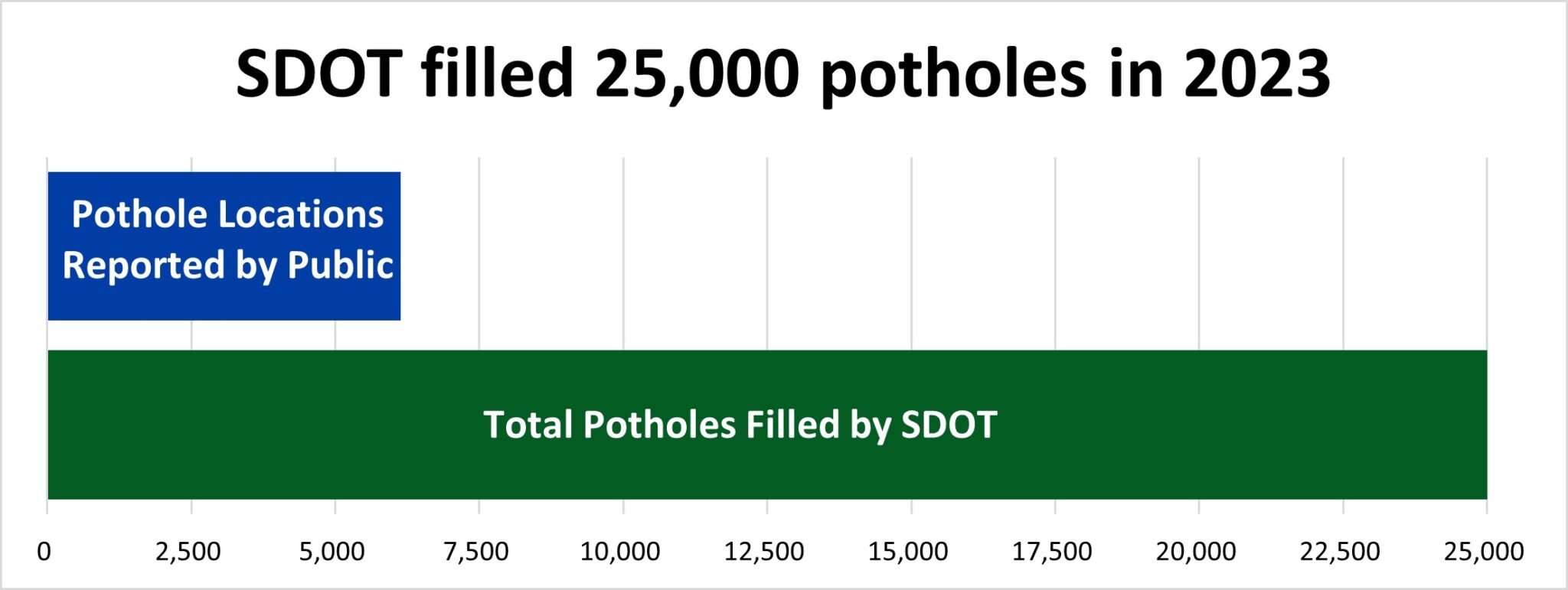
Why do potholes keep on coming back?
Winter weather is extremely tough on our streets, often causing previously filled potholes to come back. Water from rain and snow finds its way through cracks in the ground and erode the pavement. When the temperatures drop below freezing, this water expands into ice which forces the cracks apart and slices up our streets from the inside out.
New potholes keep showing up for months after a storm. As heavy vehicles drive over the damaged pavement it puts stress on the street over time, eventually causing large chunks of concrete to break off.
Repairs we make in the winter don’t last forever because asphalt does not bind to the surrounding pavement as well during cold weather. So potholes we fill today might come back and need to be fixed again in the future.
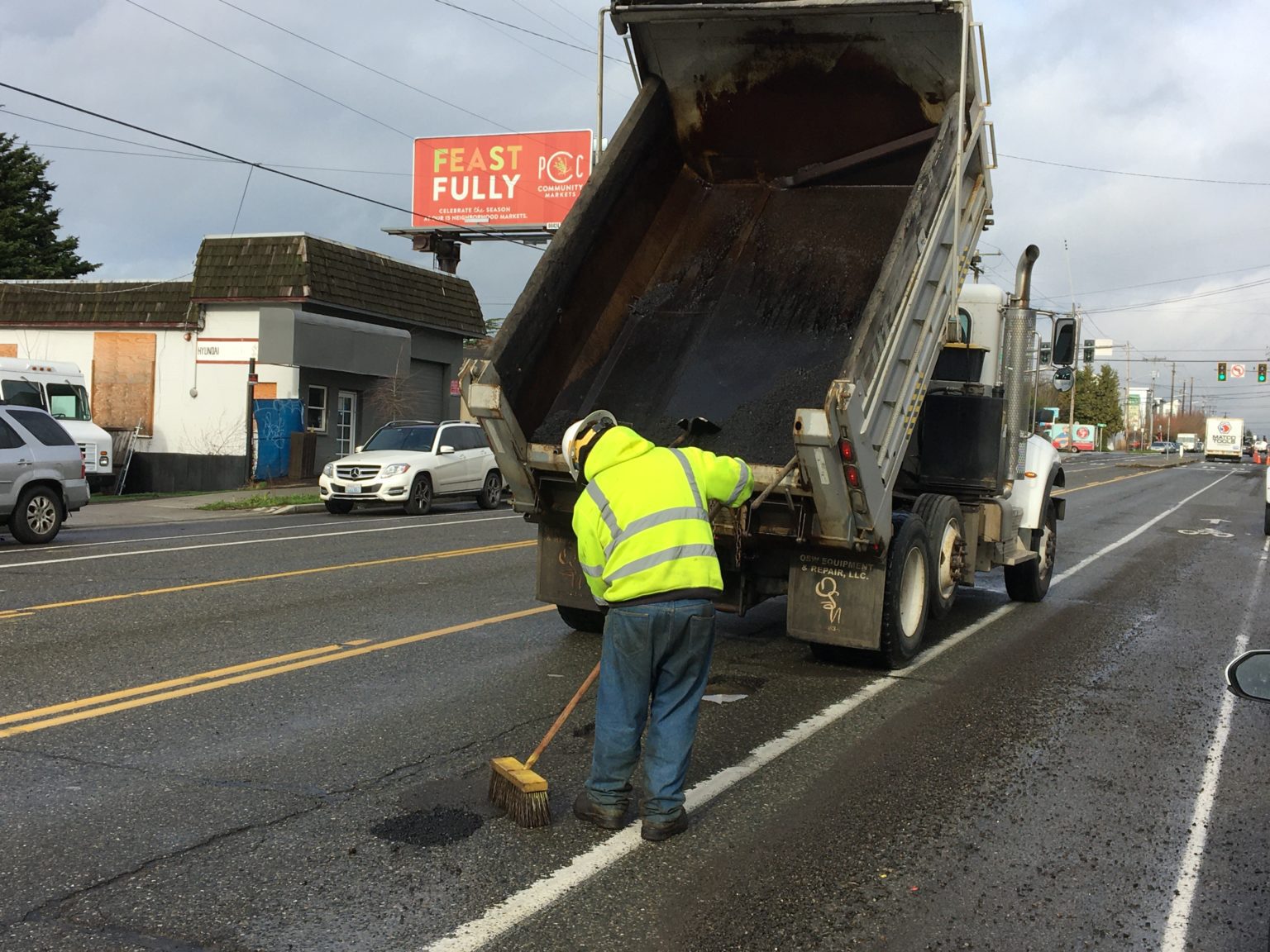
Paving projects help prevent potholes
Filling potholes is a temporary solution, so we also work year-round to prevent potholes with larger paving projects to completely replace old and damaged pavement.
Potholes are less likely to occur on streets that have been recently paved. Thanks to the Levy to Move Seattle, we have re-paved over 215 miles of Seattle streets since 2016.
We also add a thin layer of protective sealant to over 200 blocks of city streets a year to keep water out and extend the life of the pavement.